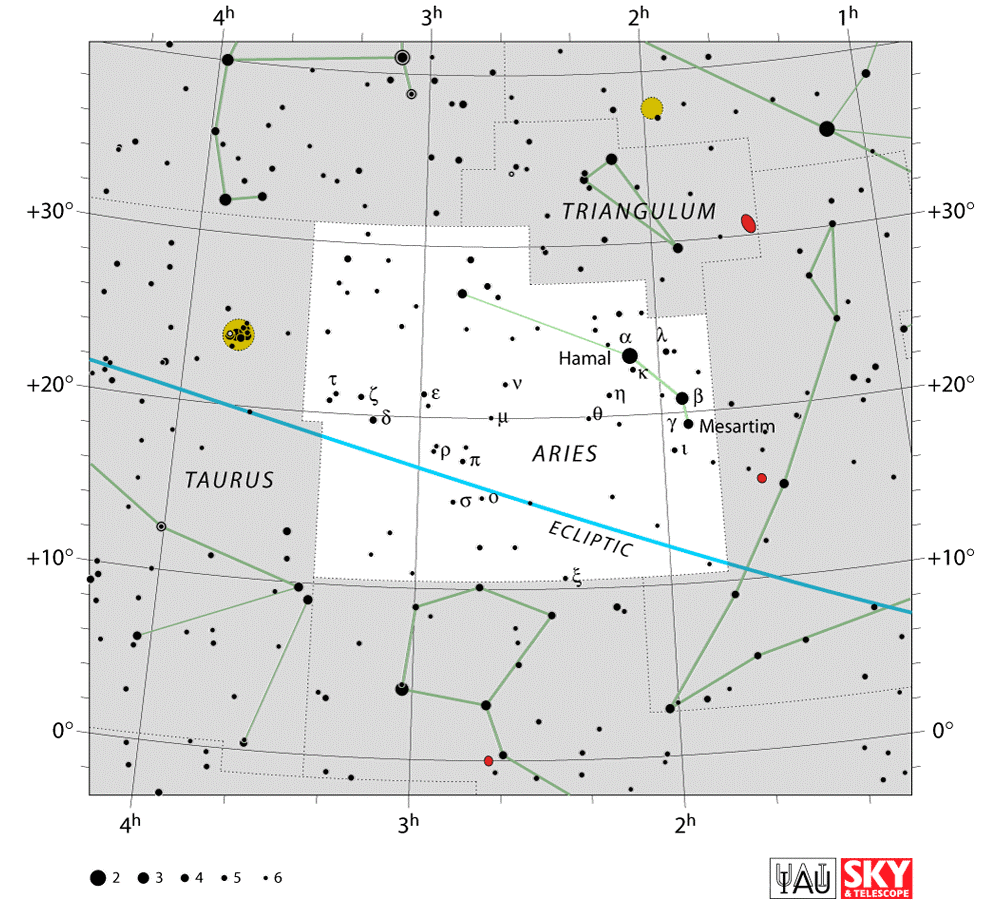



Aries
Aries the Ram is a mid-size constellation, ranking 39th in size among the 88 modern-day constellations. While it is a respectable size at 441 square degrees, it is not very luminous and has only three stars that could be called "bright."
Aires doesn't represent the ram to every culture. The Chinese see the constellation as twin inspectors, and it's a porpoise in the Marshall Islands.

In Greek mythology, Aries was a flying ram that saved the brother and sister Phrixus and Helle from being sacrificed to stave off famine (it was a setup by their stepmother, who hated the two). Helle fell off during the flight and drowned, but Phrixus made it to safety. Phrixus then sacrificed the ram to show his gratitude ... to Zeus, rather than to the ram. The sacrificed ram's fleece might also have been the golden fleece sought by Jason and the Argonauts.


Location

Aries is located in the Northern Hemisphere between Pisces to its west and Taurus to its east.
-
Right Ascension: 3 hours
-
Declination: 20 degrees
-
Visible between latitudes 90 degrees and minus 60 degrees
-
Best viewed in December at 9 p.m.

Deep Sky Objects in Aries
-
NGC 772: is classified as an “unbarred spiral galaxy.” It is approximately 130 light-years away and also has two supernovae; SN 2003 hl and SN 2993 iq. This planetary system also has an elliptical galaxy called, NGC 770.
-
NGC 1156: is a dwarf irregular galaxy and is actually classified as a Magellanic type irregular galaxy. NGC 1156 also has an inner core that is larger than most, thought to be the result of an interaction of sorts with another galaxy.
-
NGC 972: lies in the Northern corner of Aries and is catalogued as a spiral galaxy.
-
NGC 697: has a magnitude of 12.7 and is located in the Northwest area of Beta Arietis.
Previous
Next
Mythology